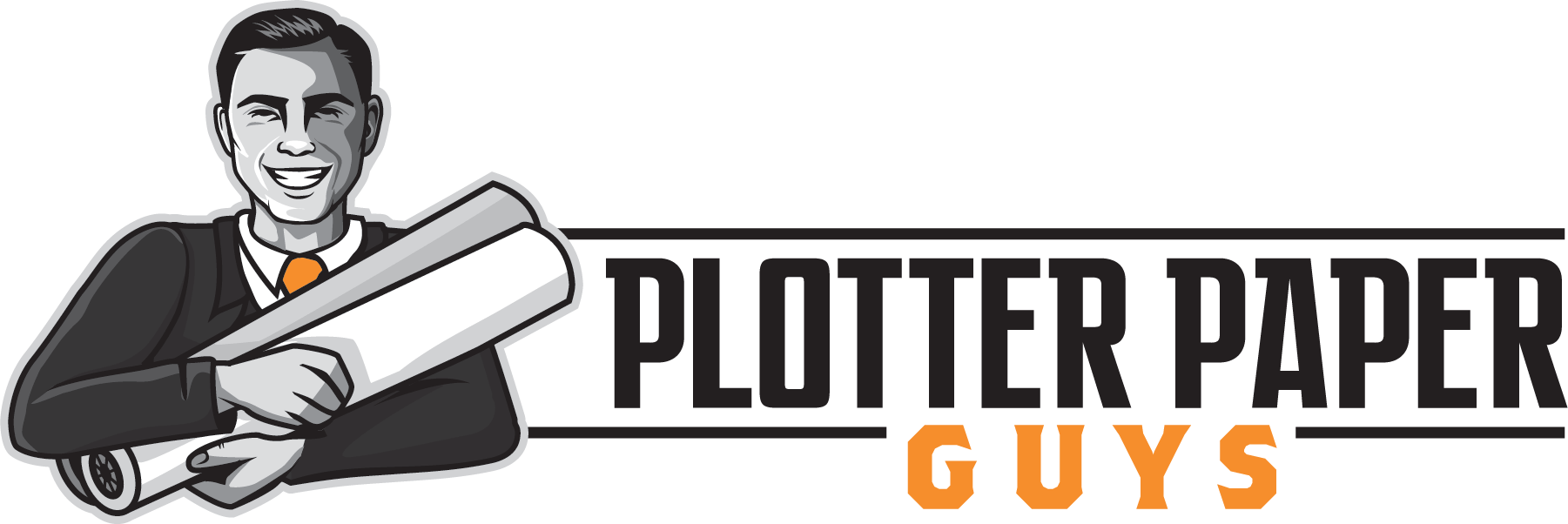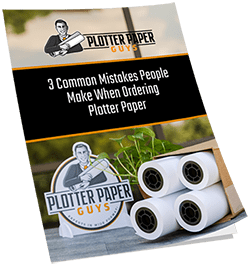Large format printing, or wide-format printing, is commonly used in architectural, engineering, and design professions to create architectural drawings, blueprints, construction plans, maps, and diagrams that need to maintain their crisp details. Large format printing can also be used to produce marketing and advertising materials such as banners, posters, and window graphics.
Large format printer media rolls provide certain advantages that sheets do not. Roll printing can often be quicker and more productive, rolls can be cut to varying sizes, lending flexibility to your project, and rolls are typically better for lamination.
Read on to learn more about the types of large format printing and which type of rolls you can use with each.
Wide-format Printing Types
Plotter printing creates drawings and graphics on paper using continuous lines to produce incredible precision and accuracy. Wide-format plotters are often used by architects, engineers, and GIS professionals when creating blueprints, technical drawings, maps, and other designs with lots of detail. Plotters can be used with all types of wide-format engineering roll paper or bond paper, including both coated and uncoated varieties.
Aqueous inkjet printing is a process in which liquid ink is sprayed onto paper that has a special coating or formulation. The HP DesignJet printers are a popular type of wide-format inkjet printer. Coated bond paper rolls, photo paper rolls, bright white inkjet paper rolls, translucent vellum rolls, and polypropylene film rolls are all recommended for use with wide-format inkjet printers.
Solvent inkjet printing involves mixing pigment and solvent to create ink. This ink is then transferred onto uncoated material where the solvent evaporates, leaving the ink behind. Solvent inkjet printing is often used to create vinyl vehicle wraps, vinyl outdoor banners, wall covers, and window graphics. Matte and glossy vinyl rolls, photo satin rolls, poster paper rolls, satin paper rolls, vinyl and scrim banners, and polypropylene banners are all compatible with wide-format solvent printers.
Latex printing uses latex-based or resin-based inks that can be transferred onto a variety of materials to create durable indoor and outdoor materials. Satin canvas rolls, adhesive vinyl rolls, microporous photo paper rolls, and poster paper rolls can all be used with latex printers.
Determining the Correct Printer Paper Roll Right Size
Consider the following when selecting roll paper for your wide-format printer:
Roll width: The width of the paper roll, in inches. Be sure this corresponds with the width of your large format printer. For example, if you are using a 24-inch printer, you will want to buy 24-inch paper rolls (or narrower). Roll width is typically listed first in the paper roll specification. For example, 24” x 150’.
Roll length: The length of paper on the roll, measured in feet. The most common roll lengths are 150, 300, and 500 feet. This number is typically listed after the roll width in the specification, for example, 24” x 150’.
Paperweight: The weight of one ream (500 sheets) of that type of paper. Two of the most common plotter paperweights are 20 lb. and 24 lb.
Thickness: The thickness of the paper, measured in millimeters (mm). You can best determine the thickness of the paper you need by checking your printer’s user manual.
What To Do Next
If you still don’t know which type or size of roll paper is best for your next large format printing job, reach out to the customer care team at Plotter Paper Guys for expert advice and assistance.




